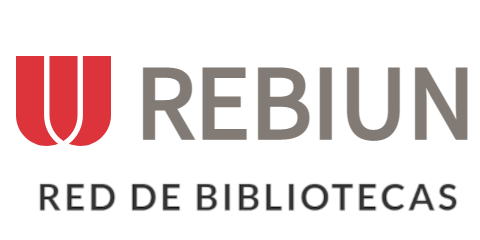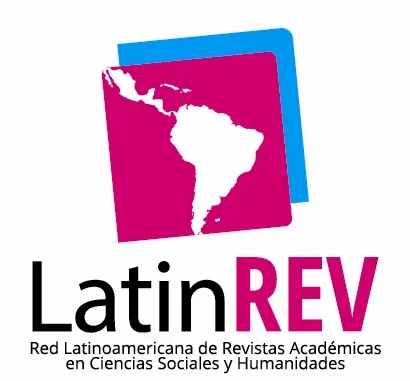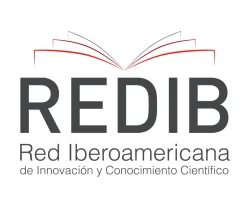Análisis Comparativo de la Vida Útil de los Componentes Críticos de Vehículos Militares (Chevrolet D-MAX modelo 2015) en Desempeño Urbano y Rural
Resumen
El presente estudio analiza el desgaste de los componentes críticos de los vehículos militares Chevrolet D-MAX modelo 2015, utilizados por la escuela de caballería del ejército nacional de Colombia. El objetivo principal es realizar un análisis comparativo del desgaste que sufren estos componentes cuando los vehículos operan en entornos urbanos frente a entornos rurales, con el fin de proponer un plan de mantenimiento preventivo adaptado a las necesidades específicas de cada contexto operativo. Los vehículos que operan en entornos rurales enfrentan condiciones de terreno difíciles, lo que afecta principalmente componentes como los filtros de aire y combustible, los amortiguadores y el sistema de escape. Por otro lado, los vehículos que operan en áreas urbanas presentan un mayor desgaste en los frenos, sistemas de suspensión y otros componentes debido a las frecuentes paradas y arranques causados por el tráfico. El estudio se justifica por la necesidad de mejorar la durabilidad y eficiencia de estos vehículos en misiones militares, reduciendo así los costos de mantenimiento y aumentando su disponibilidad operativa. Se emplea un enfoque mixto, combinando análisis cuantitativos de datos técnicos sobre el desgaste de los componentes, con datos cualitativos obtenidos mediante entrevistas a técnicos y conductores. La hipótesis plantea que la implementación de un plan de mantenimiento preventivo adaptado a las condiciones operativas de cada entorno puede prolongar la vida útil de los componentes y reducir los costos de mantenimiento. Los hallazgos de este estudio podrían servir de base para optimizar las estrategias de mantenimiento en vehículos militares, mejorando su rendimiento y operatividad. (Tessaro et al., 2017)
Descargas
Citas
Araujo, L. B., Tessaro, J., & Sardim, R. (2016). Supply Chain Risk Management Applied to Brazilian Automotive Industry. SAE Technical Papers, Part F127082(October).
https://doi.org/10.4271/2016-36-0171
Brezonick, M. (2005). A matter of scale. Diesel Progress North American Edition, 71(7), 28–31.
de Souza, J., de Souza, S. N. M., Bassegio, D., Secco, D., & Nadaletti, W. C. (2023). PERFORMANCE OF DIFFERENT ENGINES IN BIOGAS-BASED DISTRIBUTED ELECTRICITY GENERATION SYSTEMS. Engenharia Agricola, 43(5). https://doi.org/10.1590/1809-4430-Eng.Agric.v43n5e20230120/2023
Delgado, J., Arrabal, L., & Aguirre, M. Á. (2005). Desarrollo de un combustible diésel adaptado a los nuevos motores: Estudio del efecto de los desactivadores de metales en la estabilidad del combustible. Ingenieria Quimica, 37(424), 113–124.
Díaz-Reza, J. R., García-Alcaraz, J. L., Sánchez-Ramírez, C., & Vargas, A. R. (2024). Assessing the impact of Lean manufacturing on the Social Sustainability through Structural Equation Modeling and System Dynamics. Jordan Journal of Mechanical and Industrial Engineering, 18(1), 113–130. https://doi.org/10.59038/jjmie/180109
Gelaw, M. T., Azene, D. K., & Berhan, E. (2024). Assessment of critical success factors, barriers and initiatives of total productive maintenance (TPM) in selected Ethiopian manufacturing industries. Journal of Quality in Maintenance Engineering, 30(1), 51–80. https://doi.org/10.1108/JQME-11-2022-0073
Hermans, M., & Tamás, P. (2024). OVERALL EQUIPMENT EFFICIENCY, TOTAL PRODUCTIVE MAINTENANCE AND DIGITAL TWIN TECHNOLOGIES - A LITERATURE REVIEW. Academic Journal of Manufacturing Engineering, 22(2), 129–137.
Hoyas, S., Gil, A., Fajardo, P., Khuong-Anh, D., & Ravet, F. (2012). Evaluation and validation of ELSA model in diesel sprays: 3D cavitating nozzles case. ICLASS 2012 - 12th International Conference on Liquid Atomization and Spray Systems. https://www.scopus.com/inward/record.uri?eid=2-s2.0-85034817221&partnerID=40&md5=623acbf69f45f6d0c885307048308aed
Hoyas, S., Pastor, J. M., Khuong-Anh, D., Mompó-Laborda, J. M., & Ravet, F. (2011a). Application and evaluation of the Eulerian-Lagrangian Spray Atomization (ELSA) model on CFD diesel spray simulations. SAE Technical Papers. https://doi.org/10.4271/2011-37-0029
Hoyas, S., Pastor, J. M., Khuong-Anh, D., Mompó-Laborda, J. M., & Ravet, F. (2011b). Evaluation of the Eulerian-Lagrangian spray atomisation (ELSA) in spray simulations. International Journal of Vehicle Systems Modelling and Testing, 6(3–4), 187–201.
https://doi.org/10.1504/IJVSMT.2011.044224
Johnson, J., Pramod, V. K., & Pramod, V. R. (2024). Analytical hierarchy process-based maintenance quality function deployment integrating total quality management with total productive maintenance and its application in dairy industry. International Journal of Industrial and Systems Engineering, 46(3), 404–432. https://doi.org/10.1504/IJISE.2024.137957
Mendes, A. S., Meirelles, P. S., & Zampieri, D. E. (2008). Analysis of torsional vibration in internal combustion engines: Modelling and experimental validation. Proceedings of the Institution of Mechanical Engineers, Part K: Journal of Multi-Body Dynamics, 222(2), 155–178.
https://doi.org/10.1243/14644193JMBD126
Mishra, A. (2024). Evaluation of TPM adoption factors in manufacturing organizations using fuzzy PIPRECIA method. Journal of Quality in Maintenance Engineering, 30(1), 101–119. https://doi.org/10.1108/JQME-11-2020-0115
Osenga, M. (2004). Perkins opens Brazilian engine plant. Diesel Progress North American Edition, 70(1), 20–22.
Payri, F., MacIán, V., Arrègle, J., Tormos, B., & Martínez, J. (2005). Heavy-duty diesel engine performance and emission measurements for biodiesel (from cooking oil) blends used in the ECOBUS Project. SAE Technical Papers. https://doi.org/10.4271/2005-01-2205
Rathi, S. S., Sahu, M. K., & Kumar, S. (2023). Implementation of Total Productive Maintenance to Improve Productivity of Rolling Mill. Indian Journal of Engineering and Materials Sciences, 30(6), 882–890. https://doi.org/10.56042/ijems.v30i6.3158
Vega Alvarez, E., & Huang Chang, Y. (2024). Blended Learning, and Its Impact on English Speaking Skills in Pronunciation in Group 11-4 of Liceo de Santo Domingo, I Quarter 2024. Ciencia Y Reflexión, 3(2), 159–173. https://doi.org/10.70747/cr.v3i2.18
Chavarría Hidalgo, C. (2024). Calculation of productive capacity: From theory to practice. Ciencia Y Reflexión, 3(2), 194–214. https://doi.org/10.70747/cr.v3i2.20
Agrela Rodrigues, F. de A., Moreira da Silveira, F., Moreira de Lima, M. R., & Pinto Uchôa , K. S. (2024). Identificando a Inteligência em Crianças: Traços Físicos e Comportamentais. Ciencia Y Reflexión, 3(2), 21–51. https://doi.org/10.70747/cr.v3i2.5
Rathi, S. S., Sahu, M. K., & Kumar, S. (2024). Implementation of lean manufacturing methods to improve rolling mill productivity. International Journal of Advanced Technology and Engineering Exploration, 11(111), 243–256. https://doi.org/10.19101/IJATEE.2023.10102004
Riojas-González, H.-H., Reta-Heredia, I., Bortoni-Anzures, L.-J., & Martínez-Torres, J.-J. (2022). Analysis of alcohol mixture in diesel engine. Revista Colombiana de Quimica, 51(3), 34–44. https://doi.org/10.15446/rev.colomb.quim.v51n3.106796
Schulz, B. (1994). New family of diesels for world markets. Diesel Progress Engines & Drives, 60(10), 42–43.
Selim, A. B., & De Lyra, B. A. (2016). Cooling Package Selection through Radiator Area/Material and Fan Blade Angle Variation. SAE Technical Papers, Part F127082(October).
https://doi.org/10.4271/2016-36-0370
Sgarbi, S. R., & Riese, R. (2000). Introduction of a new line of electronic diesel engines at Maxion international Motores SA. SAE Technical Papers. https://doi.org/10.4271/2000-01-3253
Singh, S., Khamba, J. S., & Singh, D. (2023). Analysis of potential factors affecting execution of overall equipment effectiveness in Indian sugar mills. Proceedings of the Institution of Mechanical Engineers, Part E: Journal of Process Mechanical Engineering, 237(6), 2323–2333.
https://doi.org/10.1177/09544089221135010
Singh, S. P., Mehta, A., & Vasudev, H. (2024). Application of Sensitivity Analysis for Multiple Attribute Decision Making in Lean Production System. EMJ - Engineering Management Journal.
https://doi.org/10.1080/10429247.2024.2383855
Tessaro, J. A., Silva, A. R., Araujo, L. B., & Sardim, R. O. (2017). Supplier Base Optimization on MWM MAR-I Diesel Engines Launch. SAE Technical Papers, 2017-November(November).
https://doi.org/10.4271/2017-36-0139
Tortorella, G. L., Saurin, T. A., Fogliatto, F. S., Tlapa Mendoza, D., Moyano-Fuentes, J., Gaiardelli, P., Seyedghorban, Z., Vassolo, R., Cawley Vergara, A. F. M., Sunder M, V., Sreedharan, V. R., Sena, S. A., Forstner, F. F., & Macias de Anda, E. (2024). Digitalization of maintenance: exploratory study on the adoption of Industry 4.0 technologies and total productive maintenance practices. Production Planning and Control, 35(4), 352–372.
https://doi.org/10.1080/09537287.2022.2083996
Viera, J. P., Payri, R., Swantek, A. B., Duke, D. J., Sovis, N., Kastengren, A. L., & Powell, C. F. (2016). Linking instantaneous rate of injection to X-ray needle lift measurements for a direct-acting piezoelectric injector. Energy Conversion and Management, 112, 350–358.
https://doi.org/10.1016/j.enconman.2016.01.038
Ypma, M., & Streck, R. (1996). Wege zum kostengünstigen EURO II Motor - Am Beispiel des 4.10 TCA von MWM Motores Diesel. MTZ Motortechnische Zeitschrift, 57(7–8), 394–399. https://www.scopus.com/inward/record.uri?eid=2-s2.0-0346095011&partnerID=40&md5=0a0bd1cc774343736d2b59c3140d7e6f
Derechos de autor 2024 Elider Gómez Valencia , Ronald González Silva, Brayan Ignacio Cardozo Miranda, Jhonatan Ospina Molina, Andrés Felipe Medina Gamba

Esta obra está bajo licencia internacional Creative Commons Reconocimiento 4.0.













.png)




















.png)
1.png)


